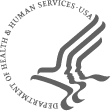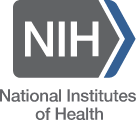Musculoskeletal Rehabilitation Sciences Study Section – MRS

The Musculoskeletal Rehabilitation Sciences [MRS] study section evaluates applications pertaining to the biomechanics and therapeutics of impaired physical functioning, as well as exercise and physical manipulation as rehabilitation strategies as they relate to the musculoskeletal system.
The List of Reviewers lists all present, whether standing members or temporary, to provide the full scope of expertise present on that date. Lists are posted 30 days before the meeting and are tentative, pending any last minute changes.
Review Dates
Topics
- Rehabilitation strategies related to neural control and exercise in relation to musculoskeletal disabilities including stroke, spinal cord injury, Parkinson's disease, cerebral palsy and traumatic brain injury.
- Rehabilitation strategies related to impaired musculoskeletal function in conditions such as carpal tunnel syndrome, repetitive stress injuries, and low back pain.
- Rehabilitative therapeutic interventions of the musculoskeletal system including rehabilitation after sports injury, ACL or total joint reconstruction.
- Studies of gait and movement involving kinematics and neural control of movement and function (including but not limited to amputees, stroke survivors, etc.).
- Motor control in integrated limb function including studies of individuals with impaired or altered function.
- Robotic interventions to restore limb function (including foot ulcers).
- Biomechanics related to skeletal muscle function and control in rehabilitation.
- Physiology and pathophysiology of musculoskeletal injuries and disorders as related to integrated behavior of the whole body and the influence of the external environment including Degenerative joint diseases (e.g., osteoarthritis, intervertebral disc degeneration, post-traumatic osteoarthritis), trauma, aging, sports-related and repetitive motion disorders.
- Application of imaging technologies (e.g., MRI, functional imaging, QCT/µCT, PET/CT, ultrasound) and computational modeling to impaired musculoskeletal function.
- Mechanobiology and biomechanics of bone and joints in the context of rehabilitation interventions.
- Use of alternative therapies such as massage, tai chi etc. in the treatment of physical impairments.
Shared Interests and Overlaps
There are shared interests with Skeletal Muscle Biology and Exercise Physiology [SMEP] in the investigation of muscle function and exercise. Grant applications that focus on molecular and cellular mechanisms of muscle function and related animal models may be assigned to SMEP. Applications that focus on rehabilitation interventions to improve muscle function, increase muscle mass, or identify muscles responsible to functional decline may be assigned to MRS.
There are shared interests with Skeletal Biology Structure and Regeneration [SBSR] in the areas of biomechanics and kinematics aspects of joint movement, as well as identification of imaging biomarkers for musculoskeletal diseases. The applications focusing on animal models to evaluate the efficacy and functional outcomes of cell- and molecular-based therapies on joint movement and to identify biological markers for bone and joint diseases are assigned to [SBSR]. Applications that focus on modeling and rehabilitative therapeutic interventions to improve spine and joint function, and biomechanics may be assigned to MRS.
There are shared interests with Motor Function, Speech and Rehabilitation [MFSR] in the investigation of preventive and therapeutic interventions for movement, and normal and disordered motor function. Grant applications that focus on speech and voice production and function across the lifespan, associated behavioral, anatomical, physiological, neural, hormonal, and genetic factors, swallowing, facial and related movement, acoustic and perceptual aspects of sound production, and related adaptive technologies and prosthetics may be assigned to MFSR. Applications that focus on motor control of extremities in humans, body posture balance, locomotion, movement disorders [including motor dyskinesia, paralysis, parkinsonism, repetitive stress injury, spasticity, tremor], physical rehabilitation following disease or injury and related exercise may be assigned to MRS.
There are shared interests in age-related changes on human mobility and exercise with aging with Aging Systems and Geriatrics (ASG). Applications that emphasize rehabilitative interventions aiming to improve motor performance, balance, and mobility in elderly people, including mobility support devices are reviewed in MRS. Applications that emphasize motor performance, balance, and mobility as effects of geriatric syndromes, including multi- morbidity and polypharmacy are reviewed in ASG as well as applications that emphasize pleiotropic interventions that include mobility and exercise (etc.) as outcomes.
There are shared interests with Sensory-Motor Neuroscience Study Section [SMN] in the investigation of posture and balance. Grant applications addressing neural or biomechanical aspects of posture and balance, especially if designed to study the motor control principles, may be assigned to SMN. Applications that focus on rehabilitation of body posture balance, locomotion and movement disorders may be assigned to MRS.

